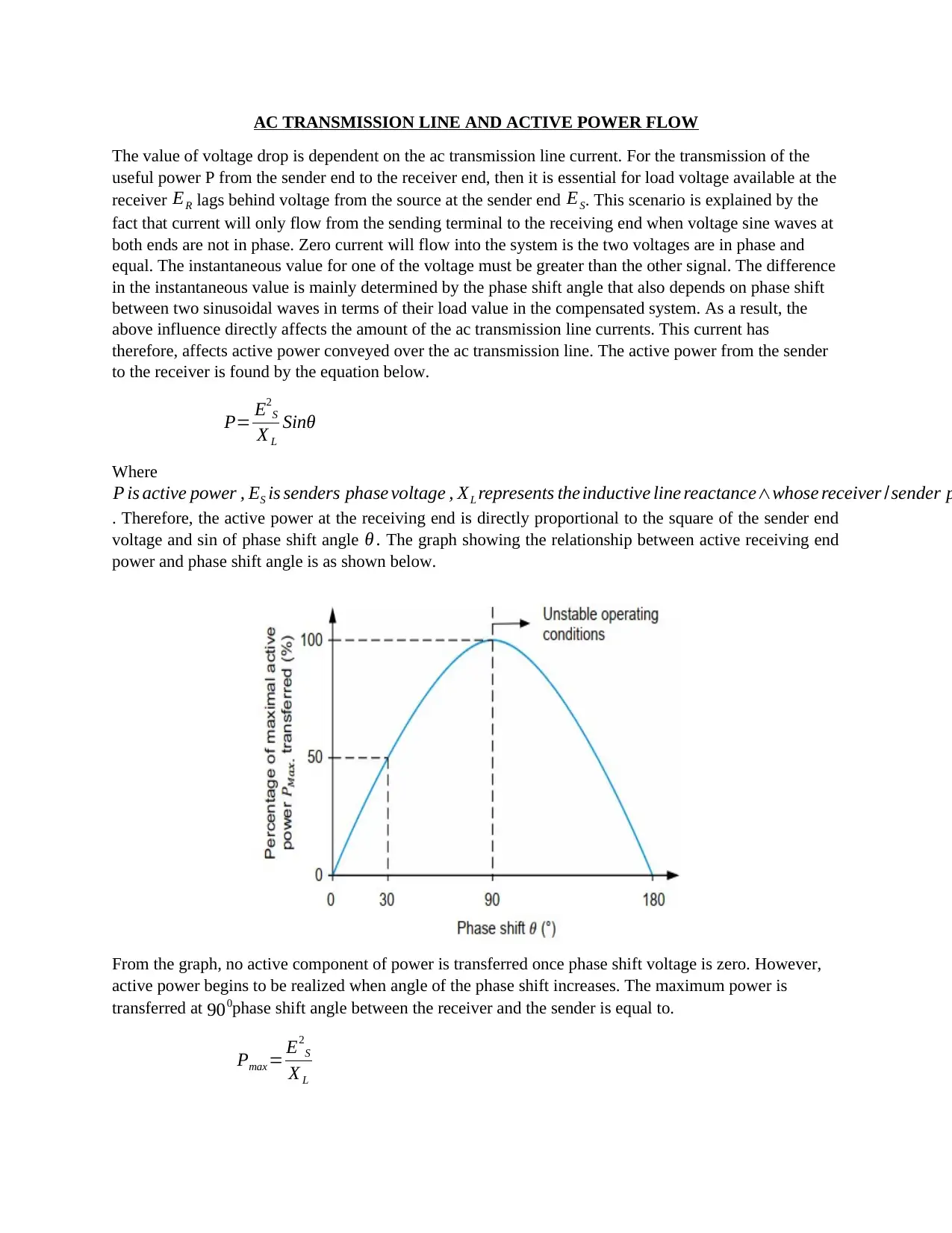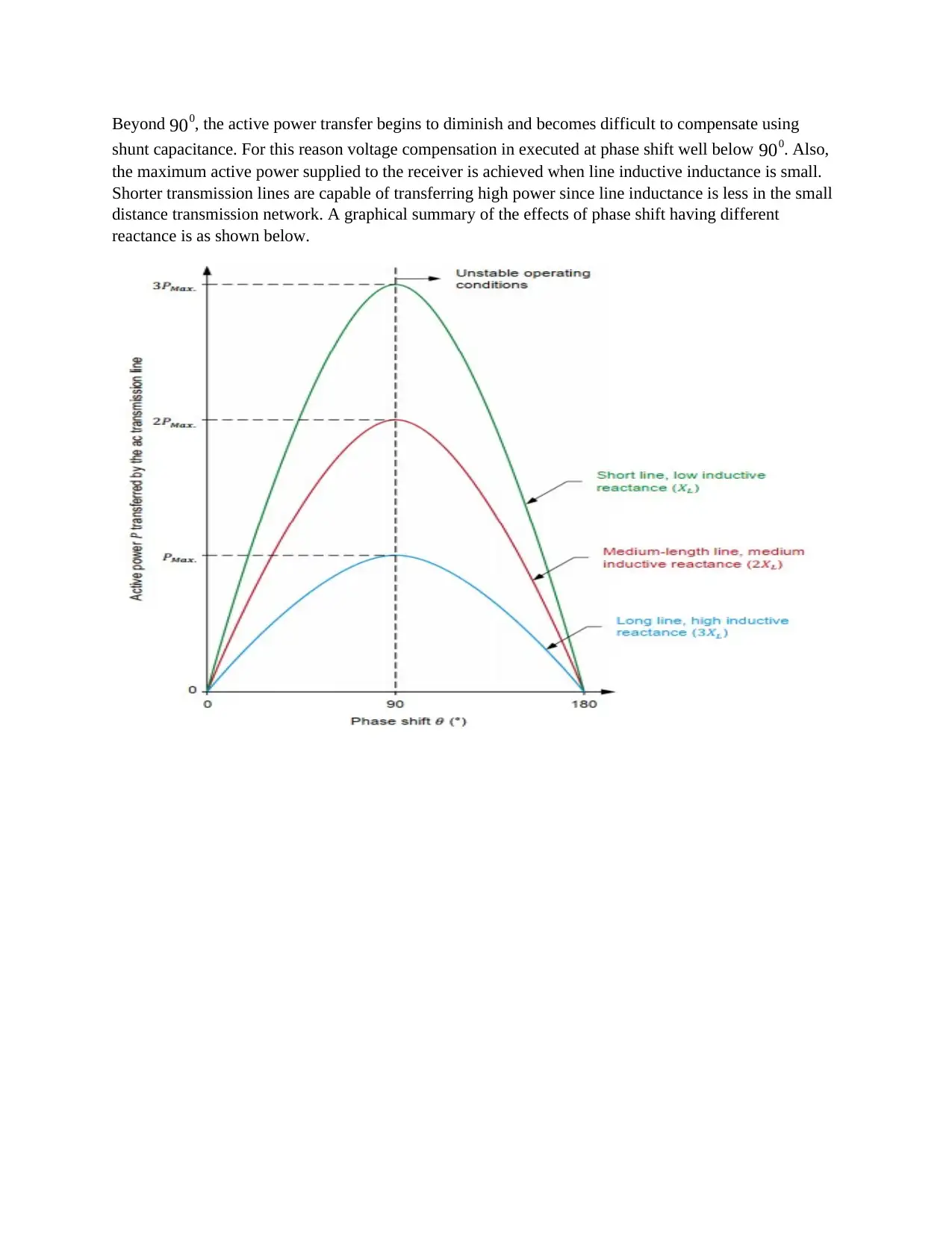An Investigation into AC Transmission Line and Active Power Flow
VerifiedAdded on 2022/11/18
|2
|397
|43
Report
AI Summary
This report delves into the intricacies of active power flow within AC transmission lines, examining the crucial relationship between voltage drop, phase shift, and power transfer efficiency. It elucidates how the current flowing through the transmission line directly impacts voltage drop and, consequently, the active power conveyed from the sending to the receiving end. The report highlights the significance of phase shift between voltage sine waves in facilitating power transfer, emphasizing that the active power is directly proportional to the sender end voltage and the sine of the phase shift angle. Furthermore, it explores the impact of line inductance, with shorter lines exhibiting higher power transfer capabilities. The report also touches upon FACTS devices and HVDC systems, providing a comprehensive understanding of power system control and enhancement techniques. The document is a valuable resource for students seeking to grasp the fundamental principles of AC transmission line operation and power flow management.
1 out of 2








![[object Object]](/_next/static/media/star-bottom.7253800d.svg)